A Well Designed Pocket Bowie That May Be Civivi’s Next Classic EDC.
Some folder designs seem built around a rather desperate premise: the company needs something new. Others, like this build from Civivi, strike me as instant classics–designs that will likely define a long line of successors. There’s nothing half-baked or desperate about Civivi’s Sinisys.
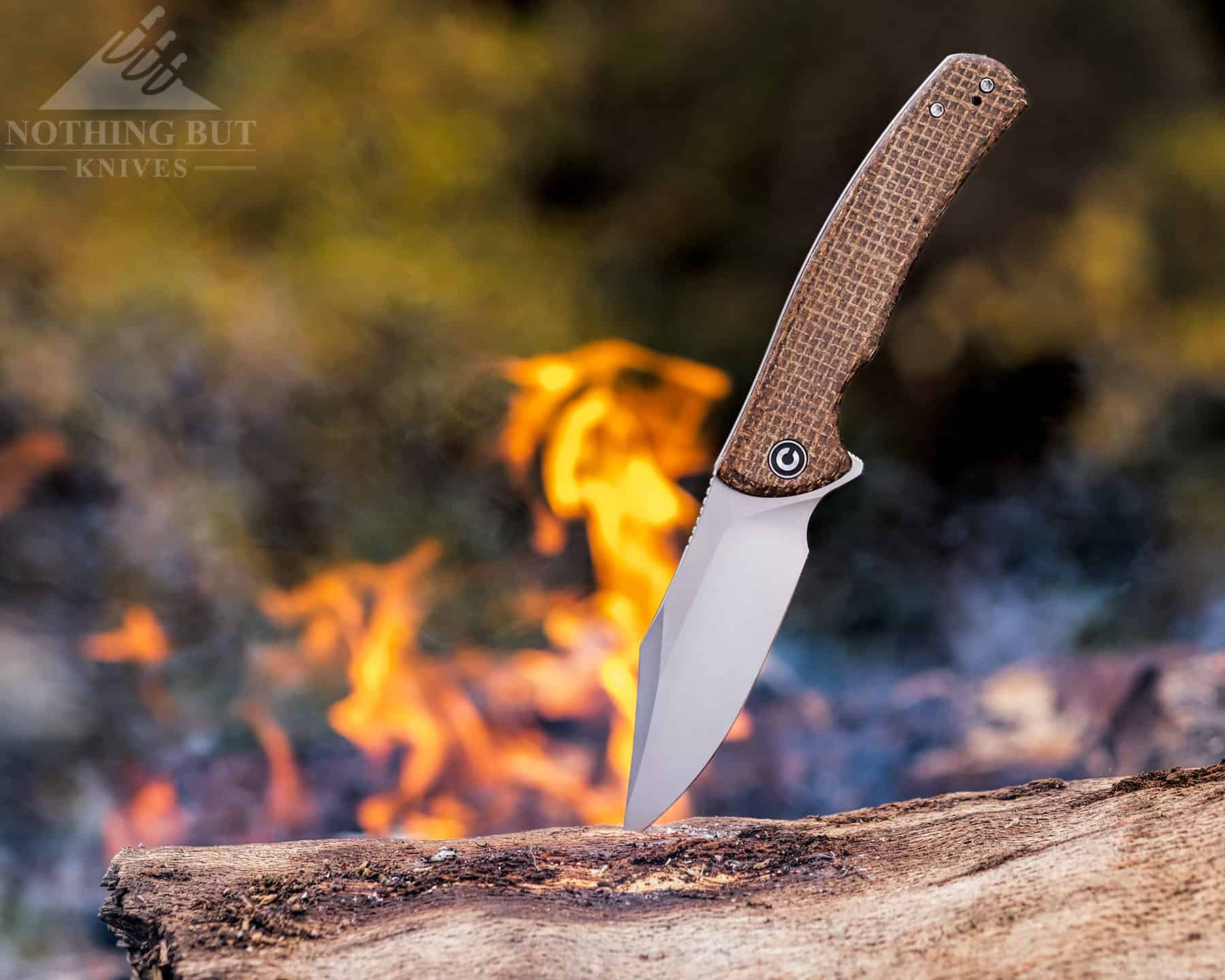
The Sinisys is a sleek EDC folder with a bit of meat on its bones. While many of the company’s EDC designs feel subtle and intentionally understated, the Sinisys is a large enough and robust enough for serious work without losing that style that would make this the ideal knife for a formal occasion.
Specs
| Overall Length: | 8.52″ |
| Width: | 1.37” |
| Overall Height(Include Clip): | 0.64″ |
| Blade Length: | 3.7″ |
| Closed Length: | 4.82″ |
| Blade Thickness: | 0.12″ |
| Handle Thickness: | 0.43″ |
| Knife Weight: | 5.02oz |
| Blade Material: | 14C28N |
| Blade Hardness: | 57-59HRC |
| Blade Grind: | Flat |
| Blade Finish: | Black Stonewashed or stonewashed |
| Blade Type: | Clip Point |
| Handle Material, Presentation Side: | Coarse G10 or Burlap Micarta |
| Handle Material, Lock Side: | Stainless Steel |
| Handle Color/Finish: | Stonewash |
Pros
| Elegant design without any of the fragility |
| Solid frame-lock design |
| Thin, wide blade ideal for slicing |
Cons
| Limited handle material options |
Blade shape is everything
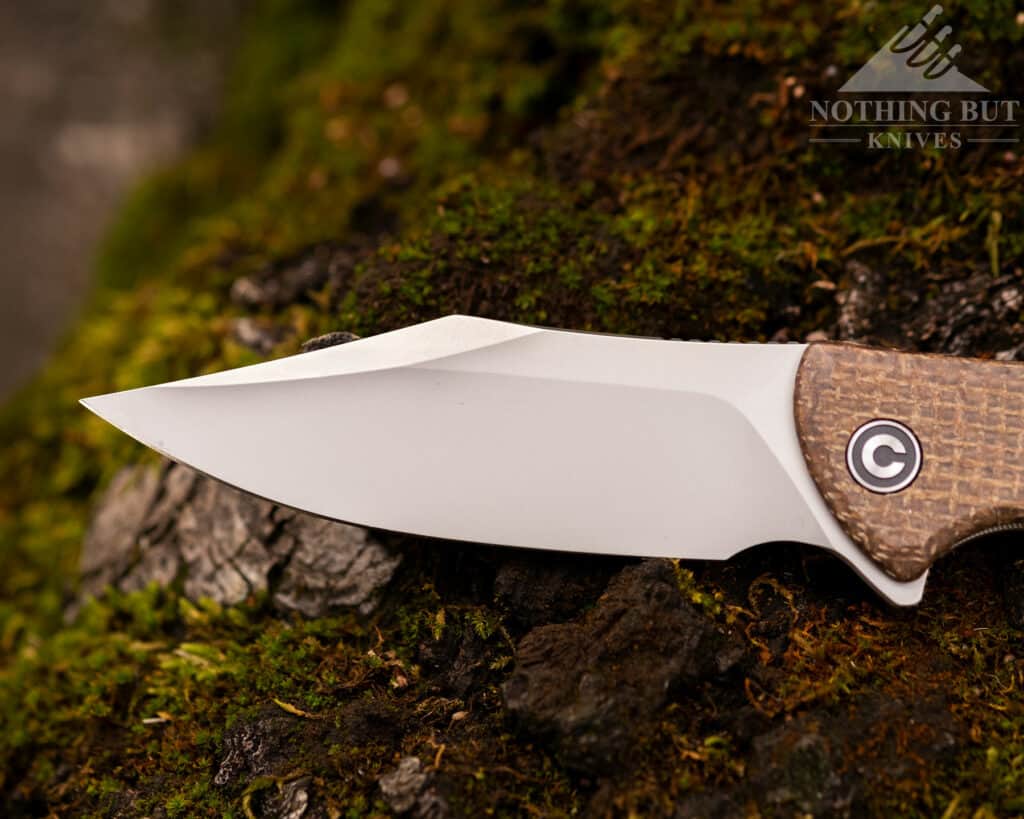
The Sinisys has a clip point design. Though this is a folder, the false edge on the back of the clip point is reminiscent of some Bowie designs. Smaller, of course, but still somewhat Bowie like.
But the clip point of almost every Bowie drops below the straight line of the spine—a line that runs perpendicular to the hilt or crossguard. The Sinisys, though, has a subtle nod to the harpoon shape as the clip rises slightly along a convex spine. The clip, too, is convex.
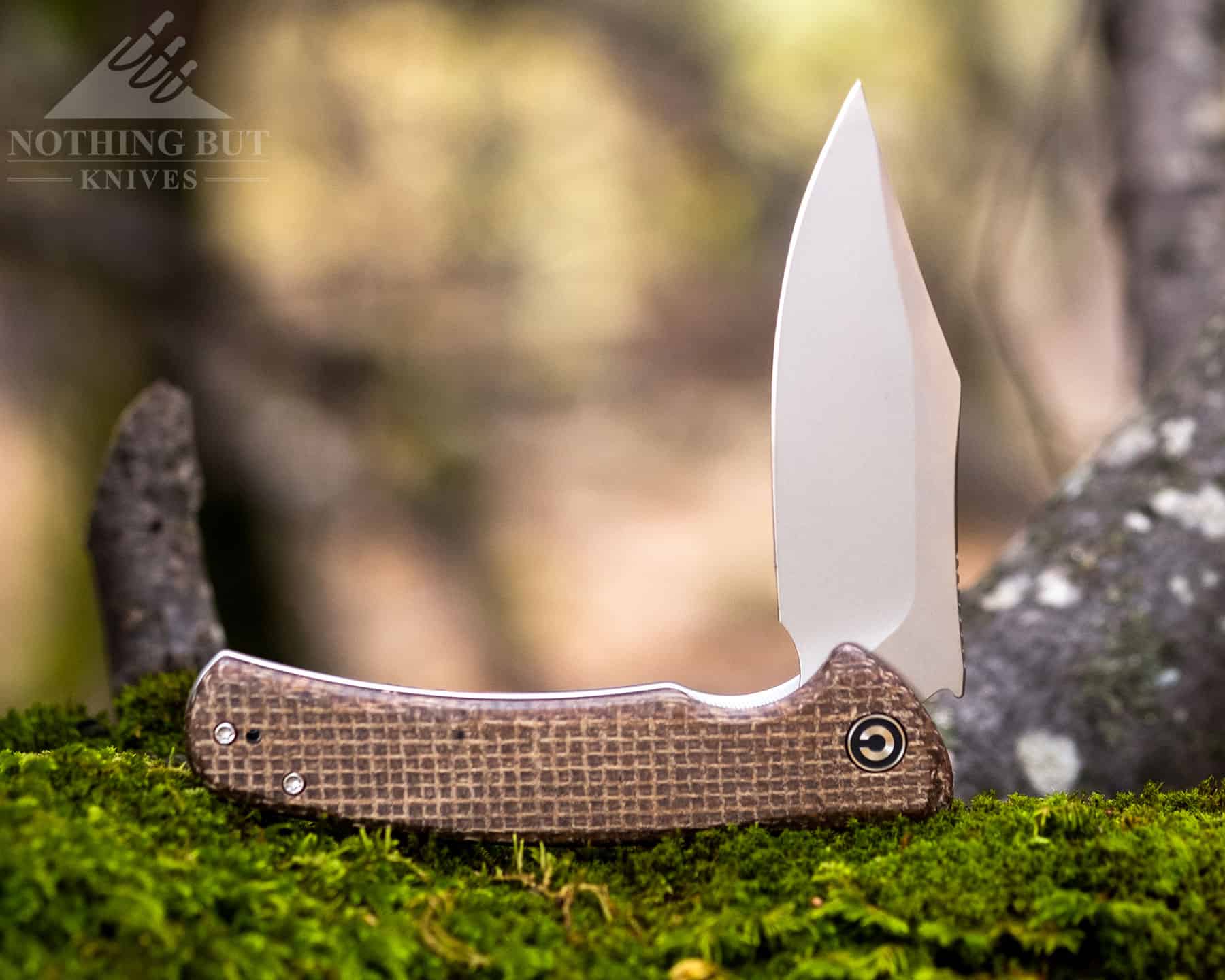
No matter how you choose to label it, the blade’s point is precise and narrow. And the Sinisys has a wide section of flat grind before the edge that makes this a solid slicer. At just under four inches, the blade has a substantial feel.
On the other side of the blade—the cutting edge, there’s a wide choil. This could be used as a finger choil to get a really solid grip for delicate work, but be careful. The cutting edge runs into the end of that choil and will require a bit of caution.
Balance
But there’s something else about the blade design that speaks to me. The blade is thin—just .12”. At this length, and more than an inch of width, the blade could be heavy if it were thicker. It isn’t heavy and the weight of the stainless steel lock side of the handle provides an excellent counterbalance to the blade.
This weight ratio helps the blade snap open crisply, and the handle takes the hit without jerking as the blade’s momentum stops.
The Handle
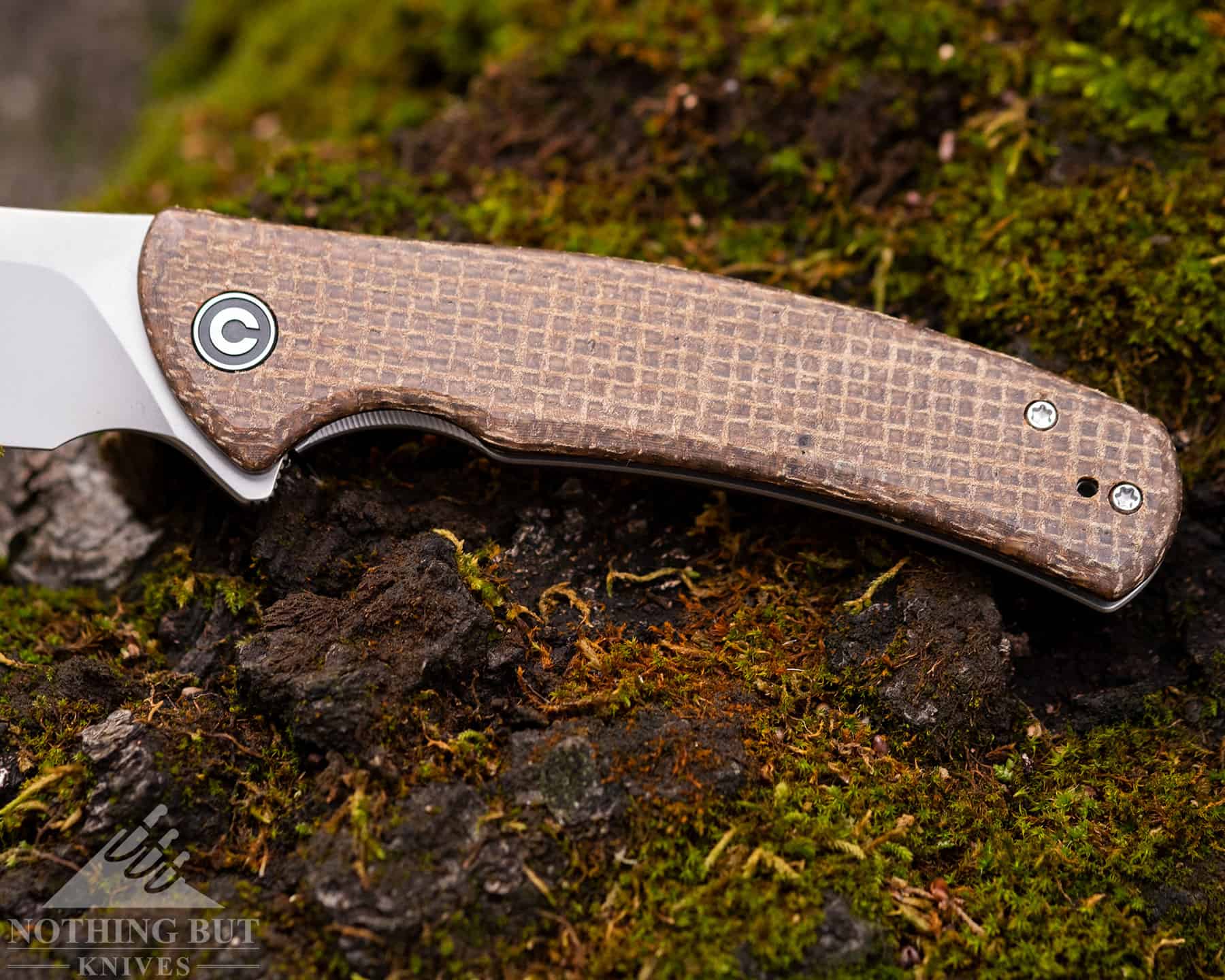
This Sinisys has the textured black G10 or burlap micarta on the mark side. The G10 has a fine grid that sticks to a finger or thumb like Velcro. The texture is highly effective without the aggressive tank-tread look some mill into handles or covers.
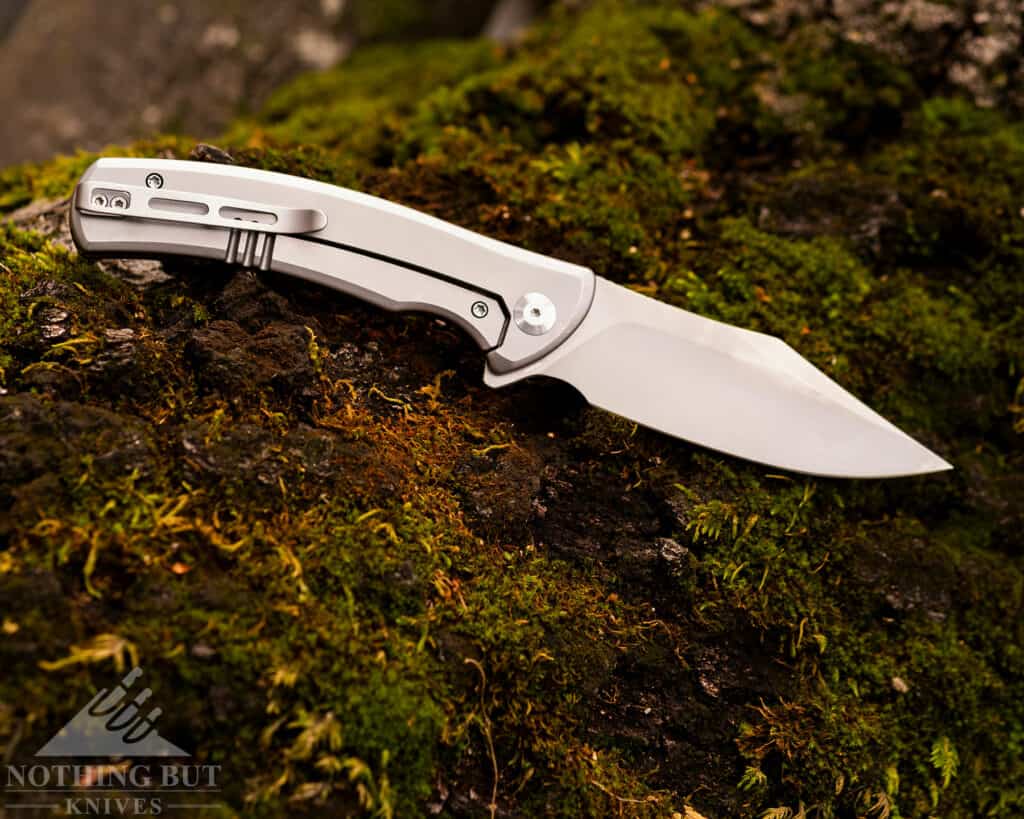
The pile side of this knife is stainless steel. The frame-lock design is stronger than a liner lock and easier to actuate. If, like me, you have a touch of the OCD, you may find a knife like this takes some time to grow on you. While I gravitate to knives with uniform handle materials, I can respect the benefits of the frame lock and just have to get used to the mixed sensory input from the colder, slicker steel and the rough bite of the G10 or micarta.
The Sinisys’s action
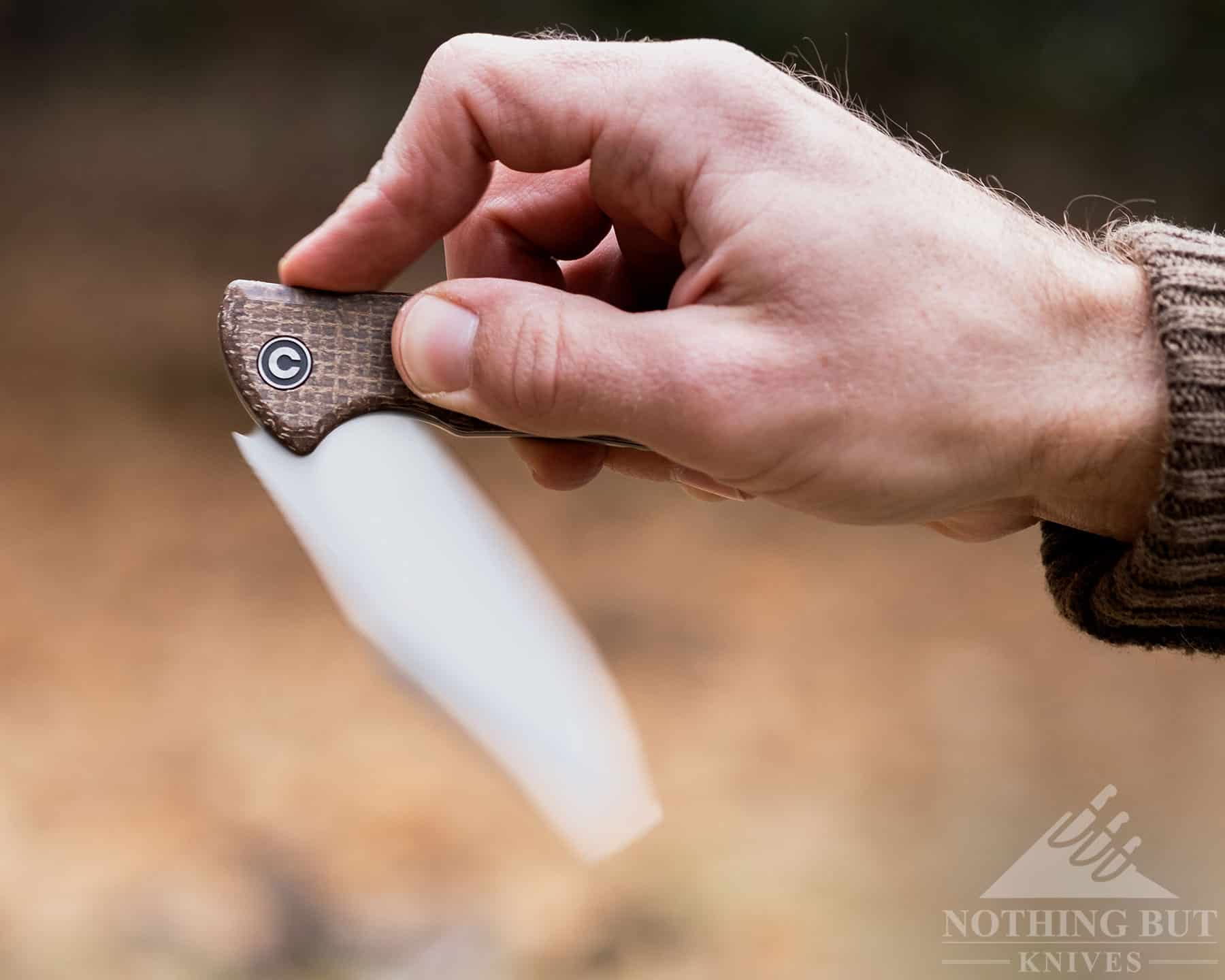
Civivi, for those of you who haven’t gotten on the bandwagon, build to precise tolerances. I’ve yet to see a Civivi knife that wasn’t both tight, precise, and fluid in motion (except for the Elementum fixed blade, which was just precise.)
Inside the handles on the Sinisys are caged ceramic ball bearings. The detent is strong enough to hold the blade closed, yet can be overcome with a modest amount of pressure on the flipper.
The flipper itself is small—the business end has only three small serrations. It is enough, though, and the bearings allow the blade to snap open with a speed I usually expect from an assisted opening knife. When I first picked up the Sinisys, I thought there was a spring inside driving the movement of the blade.
Close it, though, and you will see that there’s no loading of a spring. The Sinisys’s speed comes from kinetic energy as that force from your finger drives the blade across ceramic ball bearings. There’s no friction until the blade slams home against the stop bar.
Carrying the Sinisys
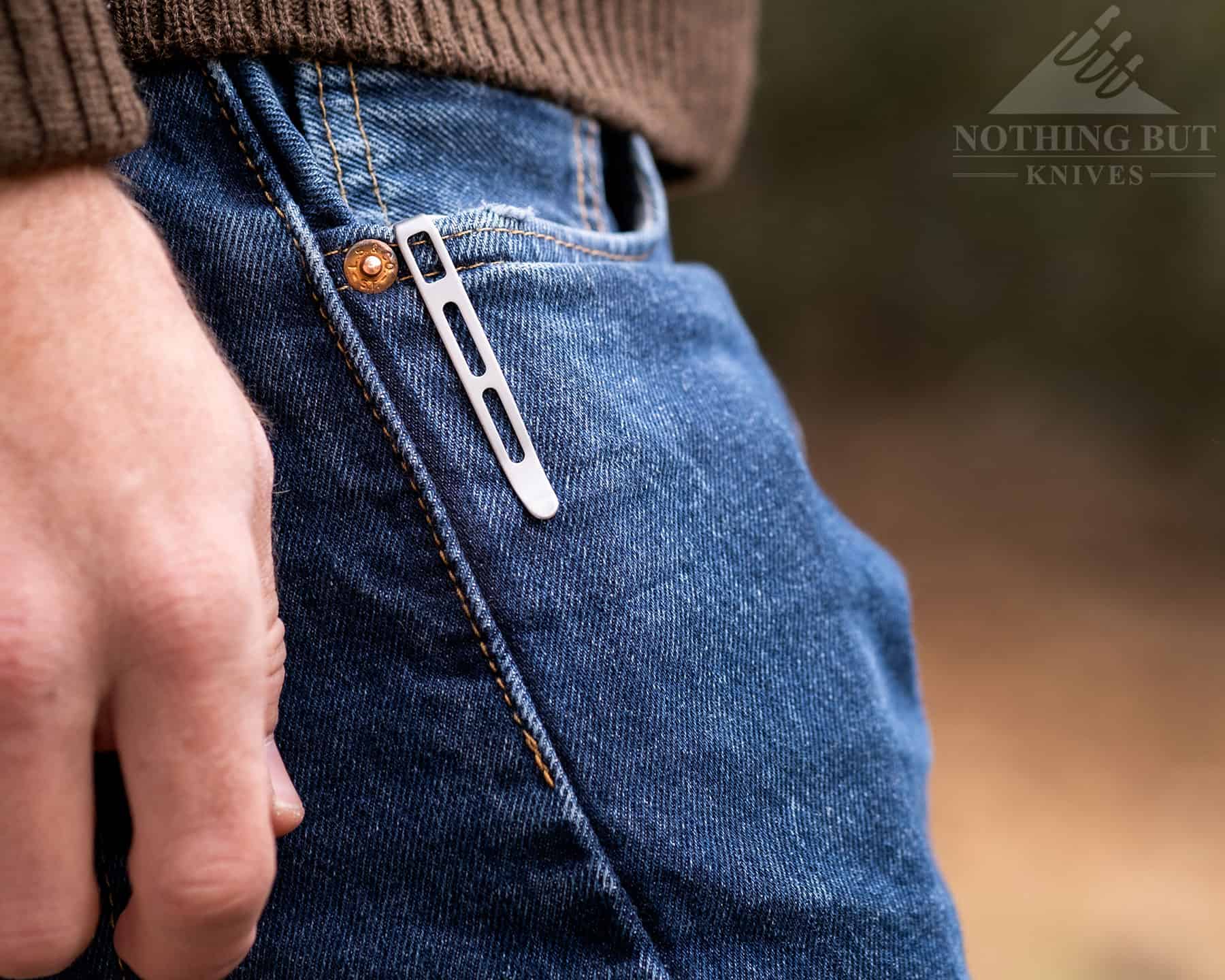
Part of the appeal of this design is the large blade on a thin knife. The Sinisys is less than half an inch thick, and that allows the blade to conceal easily in the pocket. While the design isn’t going to be my first choice for a weekend in the woods, it has dress casual written all over it.
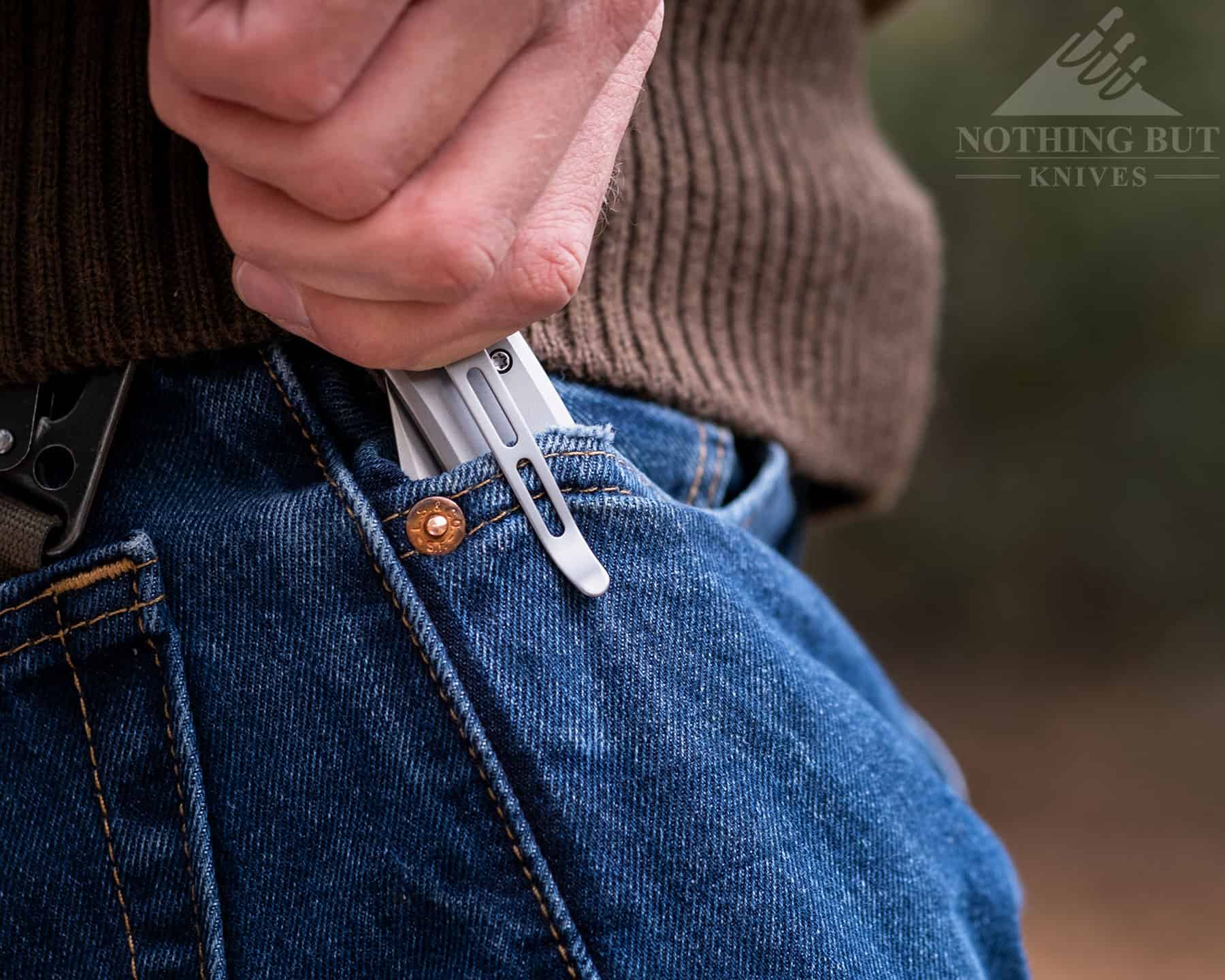
The stainless pocket clip is somewhat skeletal. Pre-drilled holes allow the knife to be carried tip-up in either a left handed or right handed configuration. The tension on the clip is decent—not so tight that it will shred your Dockers, but not loose, either. And the clip placement sinks the knife deep in the pocket (only about a quarter of an inch peeks above the seam).
What’s the Sinisys best for
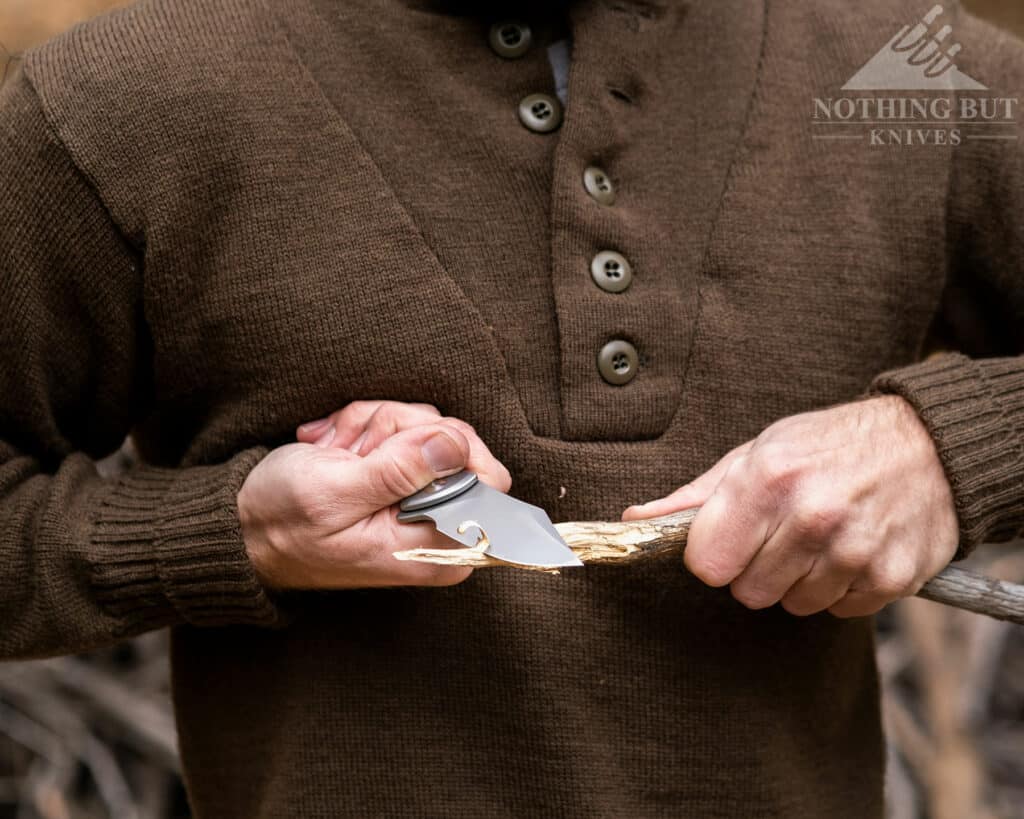
As someone who reviews knives and guns for a living, I have access to a wide selection. I tend to vary what I carry quite a bit—but I always carry. A knife like this is an excellent do-it-all EDC knife.
The Sinisys wouldn’t be my first choice if I knew I was walking into a dangerous situation. I train with several knife designs that are much more pugilistic. Yet the blade on this knife will make a statement. And the grip on the handle is sufficient for a fighting grip.
Everything else, though, that I would do with a knife in my average work day or at home for the weekend, the crux of EDC, 99% or more of the life of a pocketknife? The Sinisys is perfect.
The MSRP on the G10 version lists for $75.90. The micarta handled version that isn’t dressed in black finish lists at $78.20. If you’re feeling fancy, there’s a carbon fiber and Damascus version, for $117.
